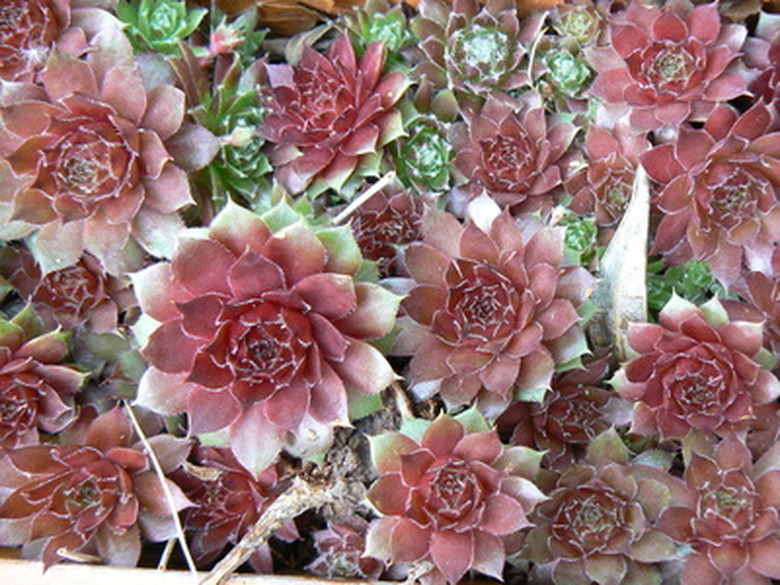How To Cut Sedum Stems
Sedums are succulent plants that include more than 300 varieties. They adorn gardens with cluster-like flowers that bloom mid-summer through fall. As the blooms fade and the plants starts to seed, the stems add interest to the fall and winter garden. Cut sedum stems for pruning, cut flowers and propagation. Always cut sedum stems with a pair of clean hand clippers or pruning shears.
Step 1
Cut sedum stems for propagation before they begin to bloom. Cut off 1 ½ inches of stem that has just one leaf attached. Insert the cut end of the stems into water or moist potting soil and they will root to form new plants.
- Sedums are succulent plants that include more than 300 varieties.
- Insert the cut end of the stems into water or moist potting soil and they will root to form new plants.
Step 2
Cut stems for floral displays or to dry for dry floral arrangements. Sedums varieties, such as atropurpureum, autumn joy and ruby glow, grow up to 18 inches tall and make nice cut flowers. Cut near the bottom of a stem that has a cluster of flowers in full bloom on top. Cut at a 45-degree angle if using in a fresh floral display and place them immediately in water.
Step 3
Prune sedum heavily once a year. Since sedum flowers are still interesting after they are done blooming, prune them during the winter or early spring before the plants start growing again. Cut the plant back to the ground to get rid of all the old stems and make way for the new ones.
- Cut stems for floral displays or to dry for dry floral arrangements.
- Since sedum flowers are still interesting after they are done blooming, prune them during the winter or early spring before the plants start growing again.
Step 4
Cut back the plant by one-third to one-half in late May or early summer. This will encourage fuller growth and yield more flowers in the summer and fall. Your plant may look a bit rough for a couple weeks until it recovers from the pruning.
